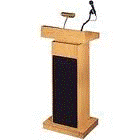
Discipline-Based Education Research Group Speaker Series
ORCID IDs
Date of this Version
2-25-2016
Document Type
Presentation
Citation
Presentation and Abstract for DBER Group Discussion on 2016-02-25
Abstract
Despite federal efforts to support the propagation of active-learning strategies in introductory college science, technology, engineering, and mathematics (STEM) courses, instructor adoption of these strategies lags behind the published research that touts their efficacy for students’ learning. Possible reasons for this lag are varied and, herein, we investigate the potential role that students play in STEM instructors’ decisions on whether and how to adopt active-learning strategies. Our study was conducted at a large public university in the Midwest. Grounded in social cognitive theory, we use a mixed methods approach that combines 34 classroom observations, one-onone interviews with students (n=57) and instructors (n=12), and online surveys of students (n=301) and instructors (n=12). We find that students pose impediments to adopting active-learning strategies, but facultyperceived impediments related to time and reward outweigh them. In addition, we find that students also provide the motivation behind instructors’ decisions to adopt active-learning strategies. The majority of students in this study indicate that they want more active-learning experiences in the classroom, and the instructors indicate that they want to provide students with more active-learning experiences, engage with them, and see their growth as learners, yet find it difficult to motivate students. Given the instructional support and time needed to develop and implement courses based on active-learning strategies, we present implications and recommendations to support the transformation of introductory college STEM courses that can inform departmental, college, and university efforts to enhance students’ learning and academic experience.


Comments
Copyright (c) 2016 Matt Patton & Leilani Arthurs